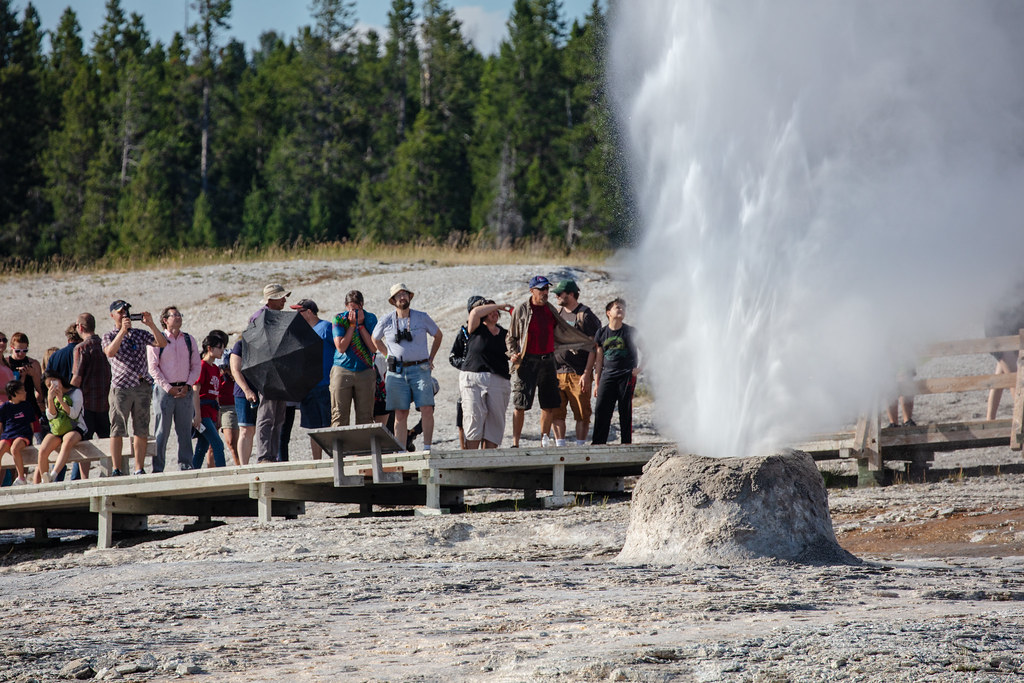The 5 Yellowstone Hiking Safety Tips Every Visitor Should Know
Written by Nick on April 29, 2023
Breaking Down Crucial Yellowstone Hiking Safety Tips
With so many distinct areas to explore and stunning sights to see, it’s no wonder that thousands of people make a point of experiencing Yellowstone hiking for themselves each year.
There’s a lot to take in, and a relaxing or exhilirating hike in Yellowstone is always good for the soul. But, unfortunately, there are some people that treat Yellowstone like a theme park. It seems that some Yellowstone visitors don’t understand that the park is wild, and there are some important safety precautions we should all take to protect ourselves, the people around us, and the park itself.
If you’re embarking on a Yellowstone hiking adventure this year, it’s important that you have a thorough understanding of the dos and don’ts regarding hiking safety. A little homework can go a long way toward making your Yellowstone hiking experience one to remember forever.
Here’s a breakdown of the Yellowstone hiking safety tips every visitor should understand before visiting America’s first national park.
1. Viewing Wildlife Safely is Key to Yellowstone Hiking
Iconic wildlife such as grizzly bears, elk, and bison are a huge draw for many Yellowstone visitors. Catching a glimpse of the species that call Yellowstone home can be a quite a special moment when you’re out on the trail, but it’s imperative that you treat wildlife with respect and keep safety top of mind.
Here’s what you need to know about wildlife safety in Yellowstone:
- Never move closer to wildlife.
- You should always stay at least 25 yards from any animal inside the park, and at least 100 yards from bears and wolves. Visitors are injured by wildlife every year — don’t be that person!
- Don’t feed wildlife.
- Hopefully this goes without saying. When you feed wildlife, you show them that humans can be a food source, which inevitably leads to human-wildlife conflicts that can prove fatal for both people and animals. Avoiding these tragic outcomes is simple — just don’t feed the wildlife, ever, even if it would make a great video for your social media.
- Be bear aware.
- Grizzly and black bears live in Yellowstone, and are particularly active when they a) emerge from their dens in the spring, and b) start bulking up before hibernating in the fall.
- Bears, especially grizzly bears, can be territorial and even aggressive. These animals are incredibly powerful, much faster than you, and can easily kill you if they feel it necessary to protect their offspring, territory, or food source.
- Carry bear spray at all times when hiking, know how to use it, and keep it at the ready.
- Hike in groups of at least three, and make plenty of noise as you hike — even if it feels kind of silly — so any bears will hear you coming from a long way off and not be surprised. Surprise encounters are most commonly the incidents that lead to serious injuries or deaths.
- Read our safety tips for living and traveling in bear country, which happens to include all of Yellowstone park and the surrounding region.
2. Have a Plan for Your Yellowstone Hiking Excursion
In some areas, like Mammoth Hot Springs or Old Faithful, it’s easy to meander aimlessly for anywhere from 15 minutes to a few hours without consequences. However, if setting out on an actual hike in Yellowstone, you neeed to plan ahead.
Ranger stations and visitor centers in Yellowstone are fantastic resources for information about trail conditions, area closures, and what to expect when hiking in Yellowstone. The National Park service also does a pretty good job of keeping its website updated with details about trails and closure updates.
Know where you’re going, how long it’ll take to get there, and what supplies you need to take, including food and water. Use our informative guide to six outstanding hiking opportunities in Yellowstone National Park to plan your trip.
Then, once you have your plan, make sure someone knows where you’re going and when you expect to return. This way, if you get lost or hurt, that person can report you to rangers and they can start looking for you as soon as possible, which is critical to your survival in such a situation.
3. Bring Essential Supplies
Trail food and water are necessary on just about every hike, but you should also carry a few other essentials on your Yellowstone hiking trip.
Weather conditions inside the park can change quickly, so it pays to have a raincoat or poncho with you, as well as a warm hat and a non-cotton insulating layer of clothing.
Especially in the summer months, you’ll also be glad you brought your sunscreen and inseect repellant.
Hopefully you always carry a first aid kit when you’re on the trail. If not, be sure to pick one up before you begin your Yellowstone hiking excursion.
As mentioned above, always, always carry bear spray with you. Take the time to learn how to use it and make sure it’s accessible at a moment’s notice, because you may only have a split-second to use it. When hiking in Yellowstone, bear spray can be a lifesaver.
4. Stay on Trails and Boardwalks
As you drive through Yellowstone National Park, you’ll notice that the infrastructure is quite limited. Most of the paved roadway is a narrow, two-lane highway with virtually no shoulder. This is indicative of how the National Park Service manages Yellowstone: Managers want to keep the park wild and free, with minimal changes to the natural state of Yellowstone.
In keeping with this approach, it’s critical that you stay on Yellowstone hiking trails and boardwalks as you explore the park. Going off-trail contributes to erosion, which diminishes the park and can even be dangerous.
The boardwalks in thermal areas are there for your safety and to preserve these fragile features, which are a highlight of the park. Leaving the boardwalk can be extremely dangerous, as the scalding water can cause serious burns. You could even fall through the thin, brittle ground in these areas, which could lead to much worse than serious injuries.
5. Be Aware of Environmental Dangers
Wildlife isn’t the only safety concern you should keep in mind during your Yellowstone hiking trip.
The park service recommends boiling, filtering, or chemically treating all water found in the backcountry if you intent to drink or cook with it. Giardiasis is a very real concern, so don’t take shortcuts when it comes to water.
As mentioned earlier, weather can turn quickly inside Yellowstone, and as a hiker, you can find yourself quite exposed with little or no warning.
Lightning is of particular concern, and lightning storms are typical during the summer months. When lightning occurs, avoid exposed areas like ridges and stay away from isolated trees, which could act as a lightning rod.
To round out our list of Yellowstone hiking tips, check out this helpful guide to being a responsible Yellowstone visitor.

